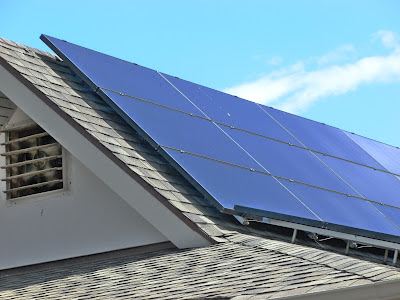Do You Know Where Your Solar Energy Will Come From?
Where the Heck is Charleston View?
Charleston View is located in the Pahrump Valley on the border of California and Nevada, east of Death Valley National Park. Travelers and traders use to cross this remote stretch of desert along the Old Spanish Trail and stop at natural springs that are fed by groundwater flows originating in the nearby Spring Mountains - a majestic range overlooking the valley. The natural springs are not as plentiful as they used to be thanks to increased groundwater pumping, and the solar project could make that problem worse. BrightSource Energy will pump 227 million gallons of water during the 29 month construction period for its Hidden Hills Solar project here, and 45.6 million gallons each year afterwards to wash the thousands of mirrors. This not only has the potential to decimate natural springs that support wildlife, but may also dry up wells that local residents depend upon.The project will not just change what is below ground. Hidden Hills Solar will dominate the landscape in the Pahrump Valley with a 5 square mile field of mirrors called "heliostats" as large as garage doors. The heliostats would focus the sun's rays onto two power towers, each of which will be 750 feet tall, twice the height of the Statue of Liberty. For a quiet rural area where nothing is taller than a telephone pall, that is a dramatic change.
Who Pays for Transmission Lines?
It's not easy for local concerns to stop a corporation that has been lobbying Sacramento and Washington, so assuming Hidden Hills gets the green light, BrightSource Energy and PG&E will have to find a way to get the electricity from Charleston View into California's grid. But there are no transmission lines from Charleston View into central California. Over 62 miles of brand new transmission lines will be necessary to carry the solar energy to the El Dorado Substation, which is in the middle of southern Nevada's desert. These new transmission lines will be expensive, and the residents of Nevada are likely to pay part of the price. A new transmission line in San Diego cost ratepayers at least 2.1 billion dollars, so we are not talking about small sums.
In order for BrightSource Energy to ship its solar energy from Charleston View into Nevada and back into California, the owner of the transmission lines in Nevada -- the Valley Electric Association (VEA) -- needs to apply to become part of California's transmission system. Simply becoming part of California's system means that the VEA will need to pay for any system upgrades that California deems necessary to remain a part of its system. VEA -- a small utility that serves about 22,000 electric meters in Nevada, compared to PG&E's five million electricity customers in California -- may be placing a losing bet.
Solar energy companies are proposing to build several solar facilities on desert wildlands in VEA's territory, but there is not much demand for utility-scale solar in Nevada, so most of them will want a way to ship their energy on VEA's lines to California. But does California want renewable energy energy generated in Nevada? The answer is no. California Governor Jerry Brown told the Western Electricity Coordinating Council in an August 2011 letter that California was no longer interested in importing renewable energy since it has thousands of megawatts of wind and solar projects proposed for construction in the state. BrightSource's Hidden Hills project in California may be the only reason VEA is submitting itself to the financial risk of becoming part of California's transmission grid.
BrightSource Energy tried to reassure VEA customers in at a meeting in April, stating that the deal with California gives VEA an opportunity to recover transmission line costs from California. This is a company that will say anything to get its way. As California is looking to generate energy in the state and at a low cost, why would it pay any substantial portion of a cost for a transmission line that provides only marginal benefit? Governor Brown's letter to the WECC already identified costs of new transmission lines as a key factor for seeking to avoid importing renewable energy from out of state.
From the El Dorado substation in Nevada where VEA plans to offload BrightSource Energy's electricity, those electrons are still separated from PG&E's cities by nearly 600 miles of transmission lines. It is estimated that up to 8% of energy sent across transmission lines is lost. That means customers are already being ripped off when the utility signs the purchase agreement to buy solar energy from a facility hundreds of miles away.






The idea of making customers independent of energy companies is no doubt repugnant to these Corporate Beasts and the Politicians they put into areas of power (and it doesn't matter which political party)
ReplyDelete